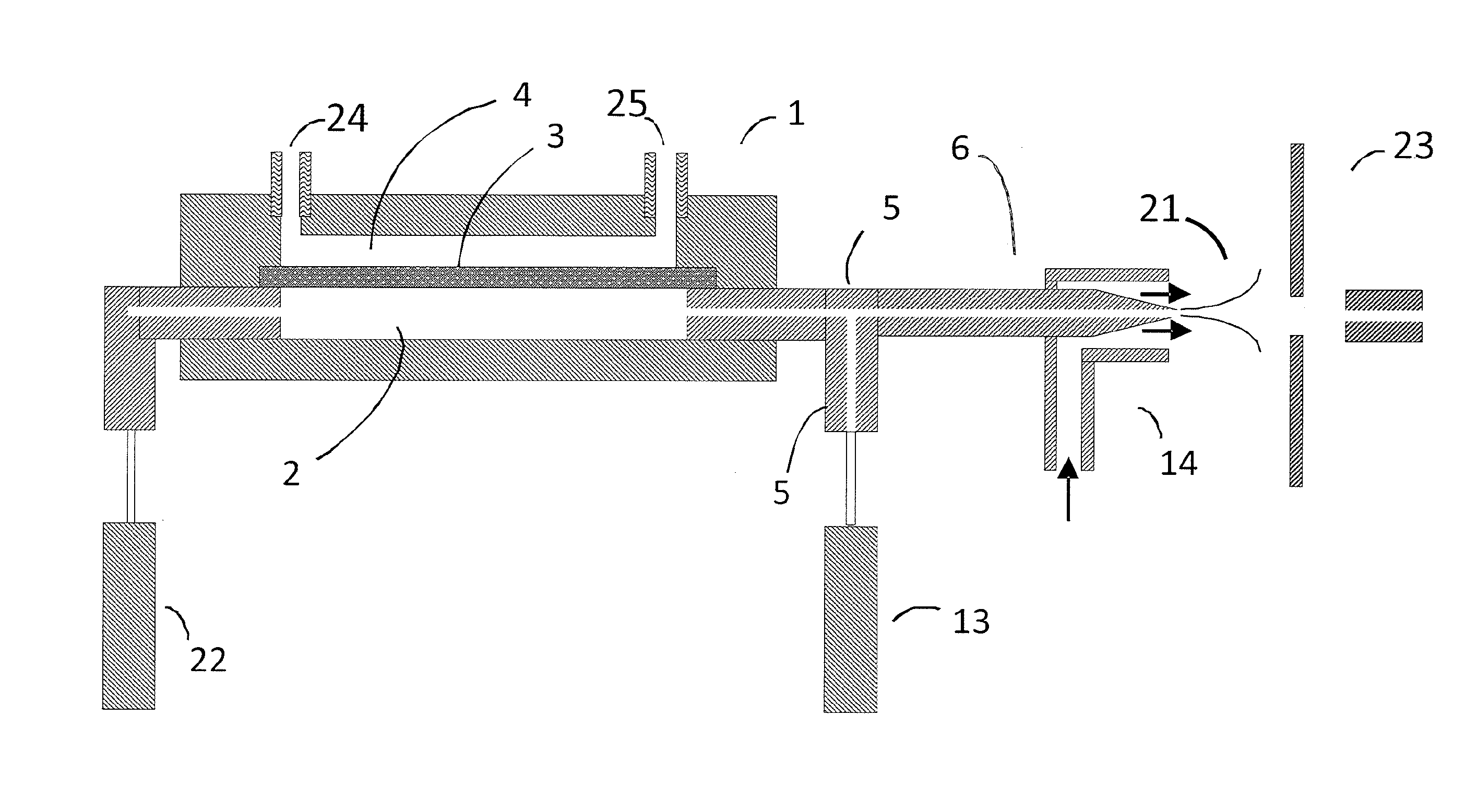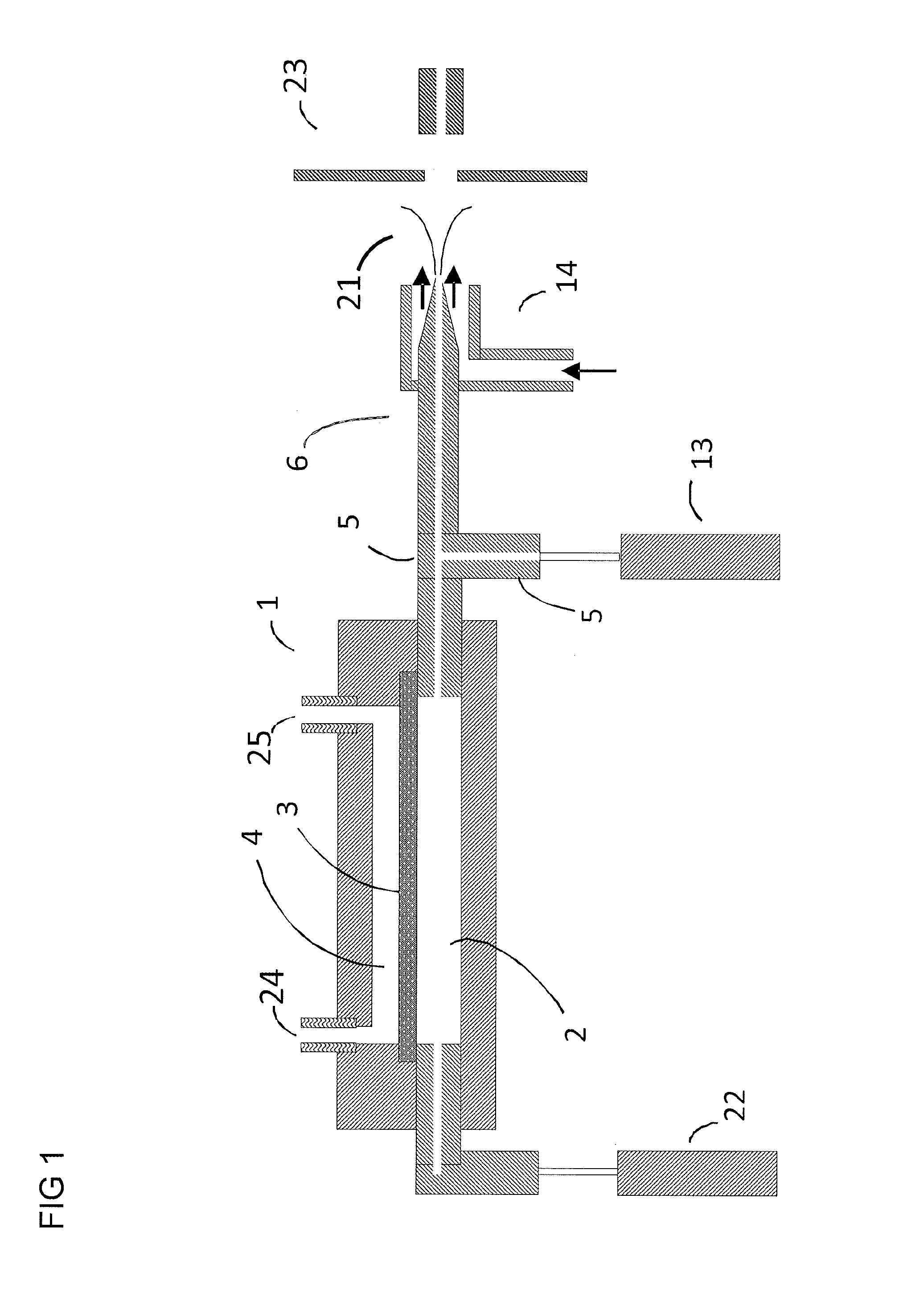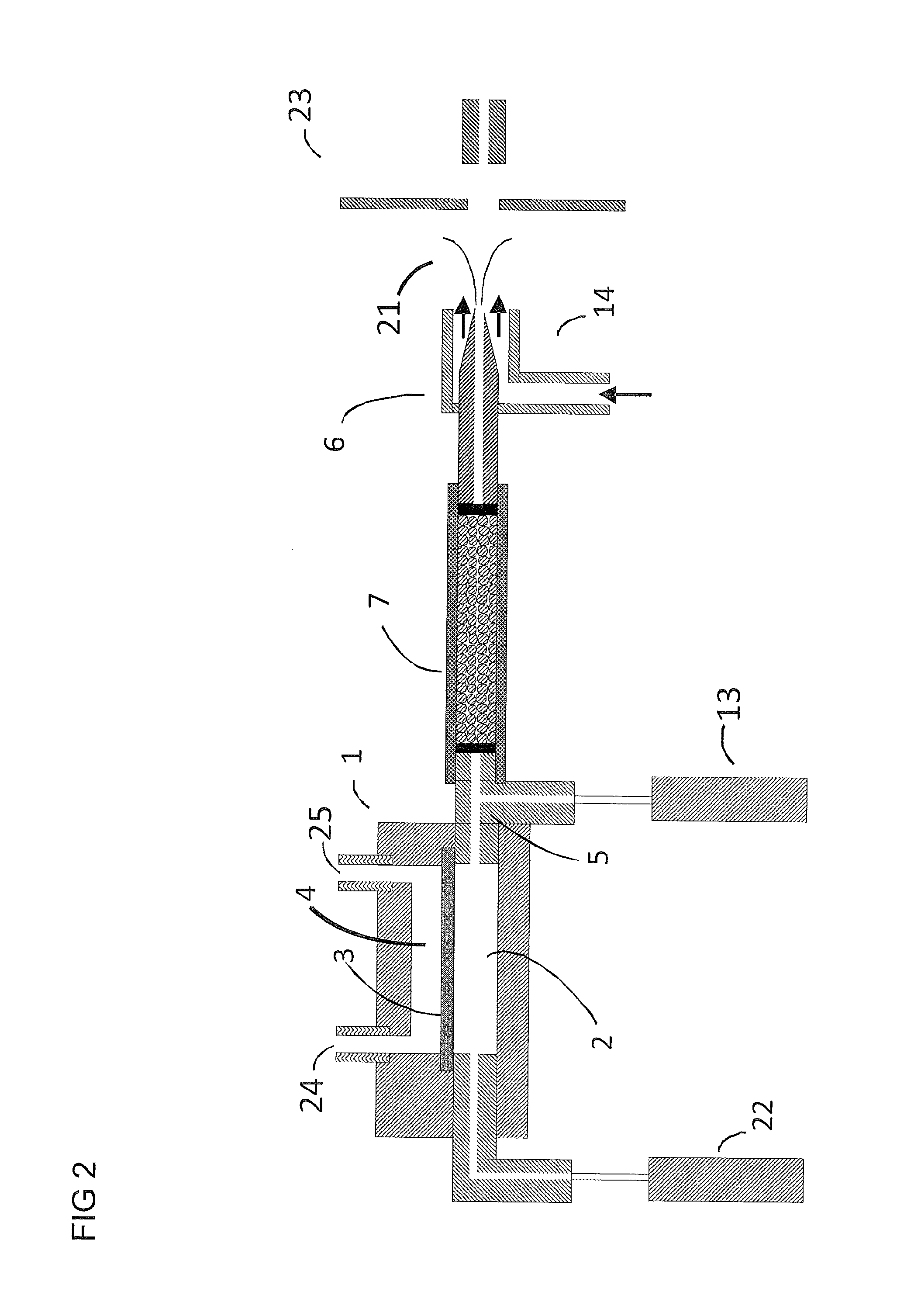Method and apparatus to perform hydrogen-deuterium exchange
a technology of hydrogen-deuterium exchange and method, which is applied in the field of hydrogen-deuterium exchange, can solve the problems of insufficient dilution of samples in deuterated solvent, added errors in reaction, and meticulous handling of samples, so as to increase the probability of a chemical compound being identified and the effect of improving the determining power
- Summary
- Abstract
- Description
- Claims
- Application Information
AI Technical Summary
Benefits of technology
Problems solved by technology
Method used
Image
Examples
Embodiment Construction
[0068]I. Electrospray ionization produces charged droplet using spray devices utilizing unassisted Electrospray or pneumatic nebulization. Unassisted Electrospray requires the formation of a stable Taylor cone jet from the sample solution exiting a channel or tube in the presence of an electric field. Depending on the sample composition, it may not be possible to form a stable Taylor cone at atmospheric pressure (e.g. high conductivity, high surface tension, and high flow rate). In order to solve these limitations, ultrasonic and pneumatic nebulization charged droplet sprayer devices have been developed. Both nebulization techniques can be used in the embodiments described below. Pneumatic nebulization sprayer devices are most widely used for the generation of charged liquid droplets from sample solutions. Pneumatic nebulization produces charged droplets from channels or tube tips in the presence of an electric field by pneumatically shearing the solution as it exits the tube. The g...
PUM
| Property | Measurement | Unit |
|---|---|---|
| pH | aaaaa | aaaaa |
| time | aaaaa | aaaaa |
| time | aaaaa | aaaaa |
Abstract
Description
Claims
Application Information
 Login to View More
Login to View More - R&D
- Intellectual Property
- Life Sciences
- Materials
- Tech Scout
- Unparalleled Data Quality
- Higher Quality Content
- 60% Fewer Hallucinations
Browse by: Latest US Patents, China's latest patents, Technical Efficacy Thesaurus, Application Domain, Technology Topic, Popular Technical Reports.
© 2025 PatSnap. All rights reserved.Legal|Privacy policy|Modern Slavery Act Transparency Statement|Sitemap|About US| Contact US: help@patsnap.com



